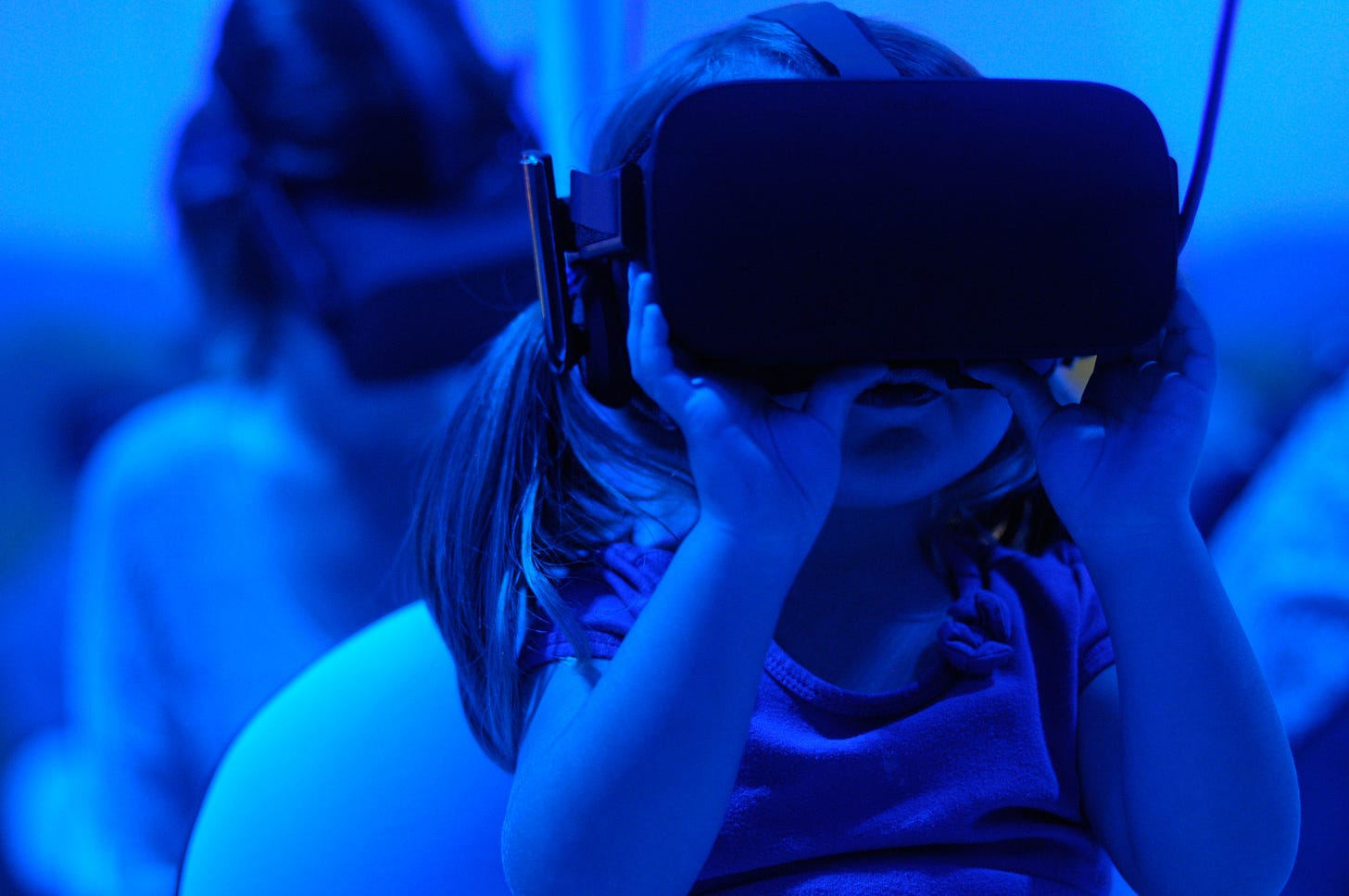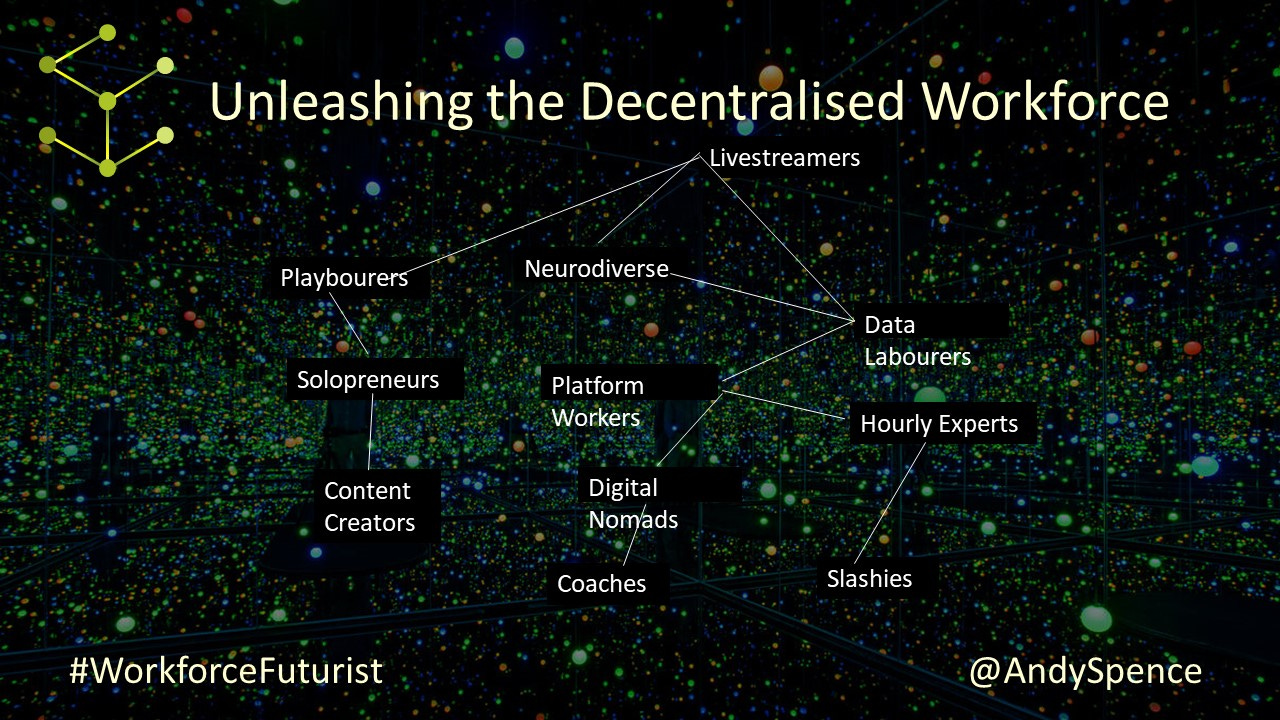They Come in Peace: Working With, and Against, New Technologies
#WF39 A Decade of Transition: Trends and Issues in 2023 and Beyond

This edition of Workforce Futurist was originally published by the Corporate Research Forum and PARC in their HR Directors’ Briefing Paper - A Decade of Transition : Trends and Issues in 2023 and Beyond.
There are five essays in this 17 page PDF paper, including,
Steven Toft - Associate and Author PARC – ‘The Events That Shaped Us: The Global Context of the 2020s‘
Gary Simmons – Actuary - ‘The Demographic Timebomb’: Getting Ahead of Global Labour Market Trends‘
Duncan Weldon - Economist, Journalist, Author - ‘Building Back Worse: Has Western Capitalism Lost Its Mojo?‘
Julia Graham - CEO – Airmic - ‘A Turbulent Decade: Experiencing a Sea Change in Risk Management‘
As Dr Grace Lordan mentions in her foreword
“The contributors to this paper discuss some of the most complex issues that will impact HR professionals directly and indirectly this year: geopolitical instability, globalising workforces, automation, hybrid working, and sustainability.”
CRF have kindly allowed Workforce Futurist Subscribers to download the PDF for free, which I encourage you to do as it’s a very good read. Click the green button towards the bottom of this article.
In the Digital-Covid Age, we have seen a decade’s worth of digital transformation in a few months.
It was technological innovation that enabled us to centralise work during the Industrial Revolution.
It is technology innovation that is now enabling us to decentralise work.
This is allowing people to earn and learn from multiple sources using digital platforms.
As industries adapt to a volatile economic situation, it’s worth reflecting on how technology enables and shapes how we manage work.
Cloud-Based Software
The move to Software as a Service (SaaS) models over the last 15 years has led to the standardisation of HR-related processes. In the past, we could adapt and mould our systems around the nuances of inherited HR processes. Cloud-based software meant that if we wanted to use the latest HR software, we needed to harmonise our processes. This has brought a step-change improvement in HR efficiencies.
The traditional narrow strip of employee data recorded has now been extended to employee sentiment, productivity, and even personal data like location.
We have seen an influx of talented behavioural scientists into HR to utilise this data and technology which has seen innovative People Analytics functions push organisations forward.
While this is a great opportunity to develop our people function, it also raises some important questions for HR:
Are we measuring the right things?
What is the right balance between empowering workers and spying on them?
Distributed Platforms
A work designer can aggregate tasks and associated skills and convert into job roles. The reverse is also true.
So, what work needs to be done, and where is the best place to source it?
Work tasks can be identified and sourced on freelance platforms such as Fiverr and Upwork.
One in seven working-age adults in the US has worked from such a platform. These platforms then match qualified, user-rated and available workers for tasks including coding and designing.
Gradually, these platforms will move through industry verticals, like Medicine or Education, and horizontally across different skill sets, from coaching to traditional consulting.
Examples of the emerging decentralised workforce using platforms include:
Teachers and coaches – some of the largest ranked marketplace platforms are in education, matching learners with teachers. These include Outschool, with over 1 million young learners and 140,000 interactive online classes, and TeachersPayTeachers, a platform with 7 million educators.
Hourly experts – independent contractors offering global consulting expertise by the hour with Talmix, Toptal or Gigster.
Solopreneurs – independent digital shopkeepers boomed during the Covid era, with Shopify with 1 million stores and also Etsy.
Digital Nomads – watch cities compete to attract workers who can work anywhere.
There are now many accessible ways to earn and learn outside of traditional employment, which will increasingly challenge the hegemony of the traditional employer brand appeal.
A New Infrastructure For Work
The internet has brought us some previously unimaginable benefits, especially in HR where we have been able to find candidates using social media and exchange electronic data easily. It has also generated some equally unexpected problems, including friction, the need for trillion-dollar intermediary industries, and spam.
One of the results is that most data is owned by a small number of ‘digital landlords’, who charge a 15- 20% fee to access our data.
Every industry is evaluating how to better use data, giving users more control and privacy, and this applies to work too.
A new infrastructure for work is being built by non-profit foundations like the Velocity Foundation which standardises employment credentials so they can be portable and verified across trusted decentralised networks.
We will move past the CV – invented by Leonardo Da Vinci in 1482 – and into new models where individuals control their credentials.
A credential in this context might include a degree or employment history. This credential can then be verified using decentralised nodes in a network with trusted entities such as universities or employers. All nodes need to agree a transaction for it to be approved.
These digital profiles can be used on work-matching platforms and create a more direct relationship between worker and employer. Over time it is envisaged that the organisations do not need as many full-time employees as they can pull from a liquid workforce using these platforms.
The Rise of Self-Managed Teams
Workers want more autonomy, flexibility, and equity.
At the intersection of social and economic trends, we are starting to see examples of work being reorganised by teams.
As work was industrialised, workers collaborated for mutual benefits with unions to improve worker conditions. In the post-industrialised context, workers are also re-organising themselves for mutual benefit. We are seeing reinvention of old ideas like digital guilds and platform cooperatives.
An example is in Jakarta, Indonesia, with motorbike delivery riders using platforms. They have grouped together outside the platform, using WhatsApp, and formed groups called ‘ojol’ which provide different services such as phone charging, tech support, and informal insurance.

Some new organisations are forming such as Decentralised Autonomous Organisations (DAOs). DAOs are a way of organising work with platforms where teams can use tokens to vote on governance, incentivise and share equity.
Self-managed teams will create new sources of talent for multi-nationals with DAOs, user-owned freelancers platforms, and digital guilds. Managers of teams within larger organisations may want to start thinking about how to support them to be more self-sufficient in line with these models.
Opportunities for Employers and Workers
In this emerging world, there are different opportunities and risks for those impacted.
There are big opportunities for workers, with more projects, contracts, multiple revenue streams, potential collaborators and hundreds of careers. Many will find like-minded people to collaborate with complementary skills and interests and flourish in smaller organisations.
There are also big opportunities for employers, who won’t need large static workforces on multi-year contracts as they source work directly from reliable work-matching platforms they trust.
Fewer permanent salaried staff are needed and there is far more churn, with lower transaction costs and smoother onboarding. Employer brand is still important but the distinction blurs between salaried employees and all types of contractors. A key aim of a ‘workforce function’ is to empower teams to be self-sufficient with smarter, compliant technology.
Andrew Spence, is an Independent Workforce Strategist, and author of Workforce Futurist Newsletter.







